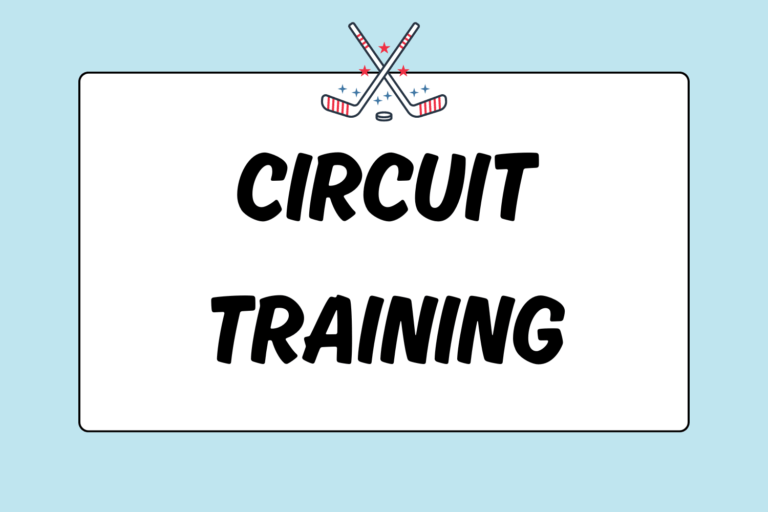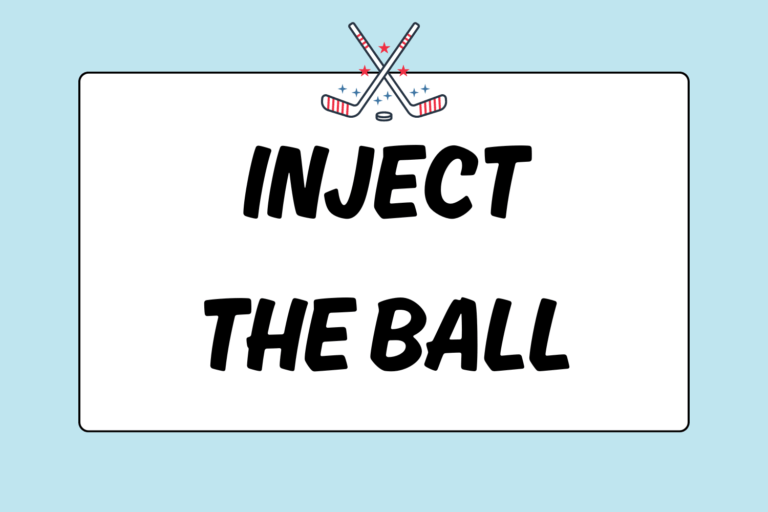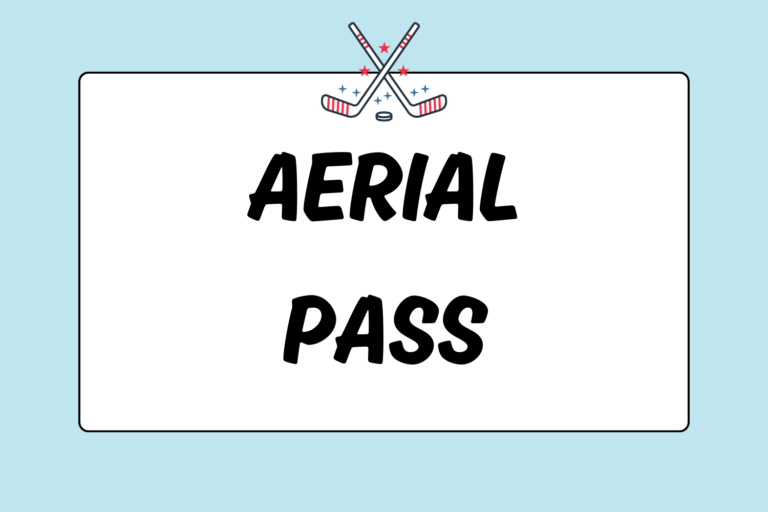Because of its short backswing, the slap is a faster and more accurate pass than a full hit. The slap is perfect for long passes or quick shots on goal. Of the basic passes — the push, slap, and drive — the slap is the most versatile. It has the power of a drive and the accuracy of a push.
The slap also provides opportunities for deceptive passes. With its controlled backswing, you can face your body in one direction and pass to the other. Also, within the shooting circle slaps can provide the power needed for hard hits, and they can be done quickly — so keep your backswing short and timely! Needless to say, a slap is a great option for quick passes to avoid defenders or to take shots on goal.
Upright Slap
Upright slaps are used for quick passes, shots inside the circle, and to clear the ball out of the defensive zone. They are also mainly used on grass surfaces. Because of the thickness of grass, it is easier to hit the ball with an upright stick than to sweep the entire stick along the rough surface.
- When setting up to take a slap, position your hands in the basic grip.
- Your left foot should be pointed towards your target. Your body (and back foot) should be perpendicular to your target (left shoulder facing the target) or slightly open towards the right of your target.
- Position the ball on the inside of your front foot.
- Place the stick upright and keep the ball close to your body.
- Keep your knees bent.
- After a small back swing, shift your weight from your back to front foot as you make a quick slap at the ball, swinging your stick forward across your body.
- You can step or stay stationary for the slap, just make sure your left foot is open, pointing toward the target. You can also slap on the run.
- As you are swinging your stick forward, rotate your hips to produce power. After you make contact with the ball, your hips (and stick’s face) should be facing your target.
- The power in a slap comes from your core and the shift of your weight from your back foot to your front. So, focus on putting all of your weight into your slap, and turn your hips hard!
- After you slap the ball, your feet and shoulders should be facing your target. Continue swinging forward after you make contact with the ball — this is your follow-through. Just make sure that your follow-though (and backswing) never rises above waist-height. If you hit the ball correctly, the tip of your stick will naturally point towards your target in the follow-through.
Use an upright slap when making long passes while dribbling. Because you already have your hands in the basic grip, you can send the ball quickly without having to change grips.
Flat Slap
A flat slap is typically used more often than a drive on turf surfaces because it is accurate without being too powerful. Because you sweep the ball and stick along the surface, a flat slap is much harder to complete on grass. Therefore, practice the flat slap for turf surfaces and the upright slap for grass.
- Place your hands together in the middle of the stick (this is the double v or short handle grip).
- Position the ball slightly behind your front foot.
- Point your front foot in the direction you would like the ball to travel.
- Keep your hands low to the ground.
- Keep your back straight (bend at the waist) and you lean over the ball.
- Start with the ball on your stick, and then look at the target as you pull the stick back.
- Bend your knees and shift your weight from your back foot to your front.
- You can step or stay stationary for the slap, just make sure your left foot is open, pointing toward the target. You can also slap on the run.
- Sweep the stick along the ground before making contact with the ball.
- Strike the ball just above the hook of the stick.
- Your wrists will rotate during your follow-through, causing your right hand to come over your left.
Use a flat slap to avoid a defender or to make a quick, long pass. You can also use this type of slap for quick shots on goal.
Hot Tip: Flat Slap Modifications
With small modifications on the flat slap, you can make deceptive passes and take lifted shots on goal. Because the stick is close to the ground, a player can look left at her opponent, while hitting the ball straight — this is a good technique to hit past defenders. For shots on goal, if you angle your stick at a 45-degree angle to the ground, you can lift the ball in the air and take a hard, lifted shot on goal.
Slap Shot
The slap is the one of the fundamental passes used in field hockey. The faster you make the pass, the more likely the ball will get to your teammate before being intercepted by a defender. Some people forgo the slap for the more accurate push or powerful drive. However, the slap has both these attributes and speed, as well.
Next time you take a huge windup to drive the ball at goal, slap it instead. You’re less likely to get the ball taken away from you, so you’ll have a better chance at scoring the goal. Good luck!





